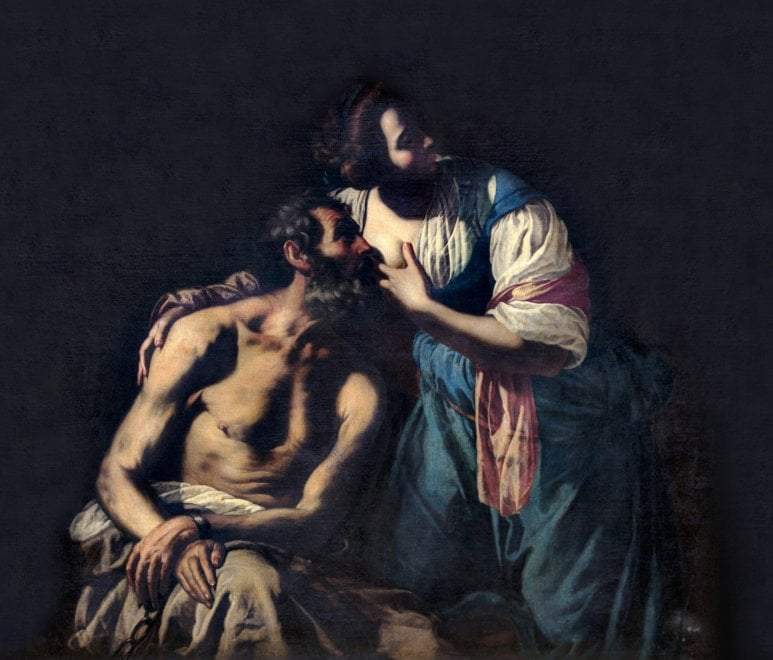In Conversano, an unpublished Artemisia and the count's painters evoke the collection of Giangirolamo Acquaviva d'Aragona
The exhibition Artemisia and the Count’s Painters, curated by Viviana Farina and Giacomo Lanzillotta, is being held at the Norman Castle in Conversano (Bari) from April 14 to September 30, 2018, and aims to “rearrange” the collection of one of the most important Neapolitan nobles of the 17th century, Giangirolamo II Acquaviva d’Aragona (1600-1665), count of Conversano and duke of Nardò, a refined collector and promoter of the arts. It was precisely in the Norman Castle of Conversano, his residence, that the count assembled an important art collection consisting of paintings, sculptures and various objects that the nobleman had begun to put together since the 1720s and which is well known to us thanks to the inventory drawn up in 1666 soon after his death.
It was precisely the inventory that served as the guide for the exhibition layout (where, moreover, it can be seen): for the first time, the collection of Count Giangirolamo Acquaviva d’Aragona and his wife Isabella Filomarino is re-enacted in the rooms of the castle through a fascinating itinerary, which begins on the second floor of the castle, with the ten canvases depicting salient episodes of Torquato Tasso’s Gerusalemme Liberata, executed by Paolo Domenico Finoglio (Orta di Atella or Naples, c. 1590 - Conversano, 1645) for the count and his consort and now at the Municipal Art Gallery of Conversano (Finoglio was one of the count’s favorite artists, if not his absolute favorite). Space then for the important finding of Caritas Romana by Artemisia Gentileschi (Rome, 1593 - Naples, 1654): it has been confidently identified with the painting mentioned in the 1666 inventory. The work allows a new reading of the cultural interweaving that saw Artemisia in contact with the great Neapolitan painters of her time, above all Paolo Finoglio himself, but also the great Guido Reni, who was active in Naples for some time, the Caravaggesque Battistello Caracciolo (to whom a painting in the exhibition, the Fortitudine Pares coming from the Cathedral Museum in Malta, is dubiously attributed: scholar Roberta Lapucci is even speculating that it may be a work by Caravaggio) and Massimo Stanzione, as well as several other notable artists Onofrio Palumbo, Niccolò De Simone, Cesare Fracanzano. All of these authors are presented to the public in that specific light, with paintings and drawings often previously unpublished.
“Many of the artists presented in the exhibition,” the presentation reads, “are to be found in the commissions that came to Naples for the Buen Retiro Palace of Philip IV of Spain and in the undertaking of the Pozzuoli Cathedral, demonstrating a precise cultural orientation of the viceregal capital in the 1730s, of which the Count of Conversano was a singular participant, recreating it in his Apulian residence. Completing the picture are coeval works by Neapolitan artists (Jusepe de Ribera, but also Andrea Vaccaro and the celebrated battalionists Aniello Falcone and Andrea de Leone), which, although not included in the 1666 list, allow, with selected pieces from their repertoire, the best possible re-setting of the themes of the Acquaviva picture gallery, as deduced from the inventory but left there without attribution An antecedent and a short section of more strict Caravaggesque observance (between anonymous first- and second-decade painters and the well-known Carlo Sellitto and the Master of Fontanarosa) introduce and better illustrate to the general public the naturalist and then Baroque ’reasons’ of the works on display, some specifically from the Apulian territory (such as those of the Master of Bovino, possibly also an artist linked to the family).”
The exhibition consists of eight rooms, titled as follows: Symbols and Repentance; Patron Saints: John the Baptist and Jerome; Cavalier Guido’s Escape to Egypt; Caravaggesque Masters; Massimo Stanzione; Artemisia Gentileschi and Onofrio Palumbo; Saints and Nudes; Bacchanals and Battles. The exhibition then continues in the church of San Giuseppe, a place associated with Countess Isabella Filomarino and located in the vicinity of the castle: the church houses the largest paintings, including Finoglio’s Triumph of Bacchus (kept at the Prado Museum), which returns to Conversano after about four hundred years, and the copy by Paolo Veronese mentioned in the 1666 document, traced to Abruzzo, in the Acquaviva d’Atri fiefs, an excellent witness to the count’s passion for 16th-century Venetian painting. At the conclusion of this itinerary, the public is invited to visit the church of Santi Medici Cosma e Damiano, known to be Paolo Finoglio’s “Sistine Chapel”: it is a building commissioned and decorated at the expense of Giangirolamo and Isabella Acquaviva. Finally, at Marchione Castle, the pleasure residence of the counts, it is possible to admire their portraits.
The exhibition is open daily, except non-holiday Mondays, from 9 a.m. to 1 p.m. and 4 to 8 p.m. (the ticket office closes half an hour earlier). Tickets: full 12 euros, reduced 10 (for Visitors from 6 to 18 years old, groups of at least 10 people, Fai delegation Puglia members with card, Italia Nostra delegation Puglia members with card, Puglia Region employees, TPP employees, teachers, disabled with certification, military and law enforcement employees off duty, SABAP-BA-FG-BAT-BR-LE-TA employees, Polo Museale della Puglia employees, ’Giovanni Previtali’ Study Center members with card). Reduced for schoolchildren 5 euros. Free for children under 6, licensed tour guides, one companion per disabled person, two companions per schoolchildren, one companion per group, accredited journalists. Info and reservations at e-mail info@artemisiaconversano.it or phone 0804959510. More information at www.artemisiaconversano.it.
 |
| In Conversano, an unpublished Artemisia and the count's painters evoke the collection of Giangirolamo Acquaviva d'Aragona |
Warning: the translation into English of the original Italian article was created using automatic tools. We undertake to review all articles, but we do not guarantee the total absence of inaccuracies in the translation due to the program. You can find the original by clicking on the ITA button. If you find any mistake,please contact us.





























